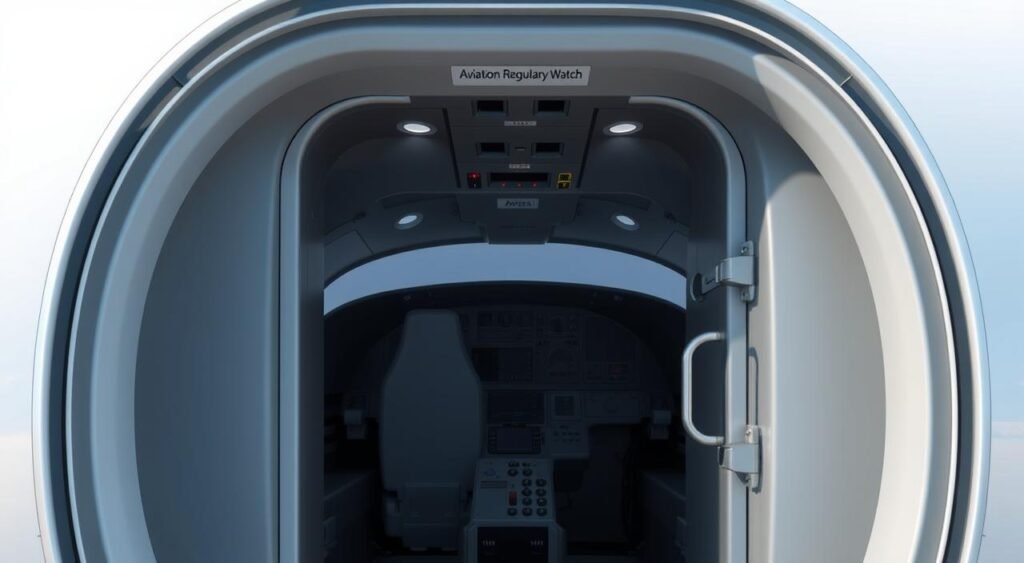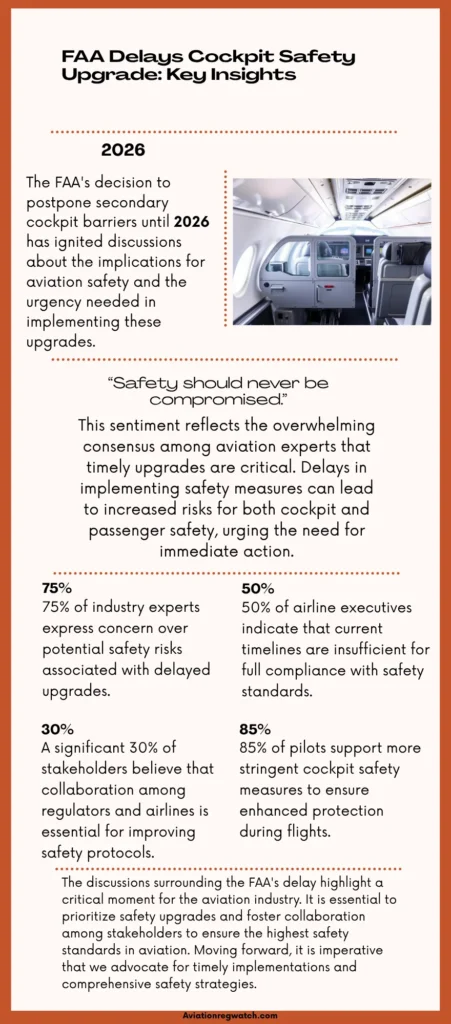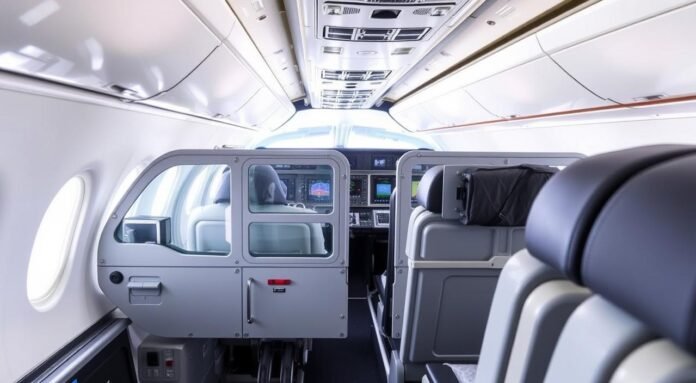FAA delays mandatory secondary cockpit barriers on new passenger aircraft, raising concerns about airline safety regulations and aircraft security features.
The Federal Aviation Administration (FAA) has announced a one-year delay in implementing mandatory secondary cockpit barriers on new passenger aircraft.
This decision has stirred reactions from airlines, pilots, and aviation security experts, raising questions about the impact on airline safety regulations and cockpit security features.
Key Highlights
- Delay Details: The deadline for secondary cockpit barriers, initially scheduled for August 2025, has been postponed to August 2026.
- Widespread Discussion: The FAA’s decision has sparked debates among various stakeholders in the aviation industry.
- Impact on Safety: Pilot groups express serious concerns regarding the implications for cockpit security.
Implications of the Delay
The FAA’s postponement impacts many aspects of airline operations and safety regulations:
| Aspect | Original Deadline | New Deadline |
| Certification Process | June 2025 | June 2026 |
| Implementation of Barriers | August 2025 | August 2026 |
| Training and Procedural Changes | September 2025 | September 2026 |

Understanding Secondary Cockpit Barriers
Secondary cockpit barriers are crucial security features designed to safeguard the cockpit against unauthorized access. Here’s what you need to know:
- Definition: These barriers serve as an additional line of defense between the cockpit and the passenger cabin. They provide critical time for pilots to react if someone tries to enter the cockpit.
- Design and Materials: The barriers are built from durable materials and can withstand various threats. They must align with the aircraft’s design to ensure passenger safety and comfort.
- Primary vs. Secondary Security: While primary cockpit doors serve as the initial barrier against intruders, secondary barriers provide an additional layer of protection.
Importance of a Layered Security Approach
A layered security approach helps ensure that if one layer fails, others remain in place. This method significantly lowers the chances of unauthorized cockpit access.
Reasons for the FAA’s Decision to Delay
The delay is rooted in several challenges that the FAA and the aviation industry face:
- Certification Process Challenges: Ensuring that cockpit access systems meet strict security standards requires thorough testing and time.
- Operational Adjustments: Airlines need additional time to update their training and operational procedures.
- Manufacturing Issues: The production and installation of these barriers are subject to delays due to capacity limitations and logistical challenges.
Airline Industry Reactions
Responses to the FAA’s delay have varied across the commercial airline sector. Some airlines view the extra time positively, while others express concern about potential security risks:
- Delta Air Lines plans to use the extra time to refine its installation processes.
- American Airlines is concerned about how the delay might impact passenger security and operational efficiency.
Here’s a table summarizing potential economic impacts:
| Airline | Estimated Cost Savings | Impact on Operations |
| Delta Air Lines | $10 million | Reduced downtime for maintenance |
| American Airlines | $15 million | Adjusted training schedules |
| United Airlines | $12 million | Revised supply chain logistics |
Concerns from Safety Advocates
Various pilot associations and safety experts have voiced their concerns about the delay:
- Pilot Unions: Express intense disappointment, stating that the secondary barriers are crucial for protecting cockpit safety.
- Flight Attendant Groups: Highlight Potential Risks to Overall Aviation Security.
- Aviation Security Experts Warn that the Delay Could Increase Vulnerabilities in Aircraft Security.
Current Aviation Security Threat Assessment
Recent trends in aviation security indicate an increase in threats, including unauthorized access and cyberattacks. Experts emphasize the importance of implementing secondary cockpit barriers to enhance overall safety and security.
Conclusion: The Road Ahead to 2026

The FAA’s delay in implementing secondary cockpit barriers on new passenger aircraft has significant implications for the aviation industry. As we approach 2026, collaboration among airlines, manufacturers, and regulatory bodies will be crucial. Stakeholders must prioritize safety while addressing the implementation challenges to ensure the effectiveness of these security measures.
By embracing this extended timeline, the aviation community can work together to effectively enhance pilot protection measures.
FAQs about Secondary Cockpit Barriers on New Passenger Aircraft
What is the FAA’s role in implementing secondary cockpit barriers on new passenger aircraft?
The FAA is responsible for ensuring that new aircraft comply with strict security regulations, including the installation of secondary cockpit barriers. Recently, they announced a one-year extension for the deadline to implement these barriers.
How will the delay in implementing secondary cockpit barriers affect airline safety regulations?
The delay provides airlines with additional time to meet the new safety standards. However, pilots have expressed concerns about potential risks to cockpit safety during this interim period.
What are the technical specifications and design requirements for secondary cockpit barriers?
Secondary cockpit barriers are designed to prevent unauthorized access and must adhere to strict FAA regulations. This includes specific features and rigorous testing to ensure effectiveness and durability.
How will airlines prepare for the implementation of secondary cockpit barriers during the extended timeline?
Airlines will need to update their training programs and maintenance procedures to comply with the new regulations. Additionally, they will collaborate with manufacturers to acquire and install the necessary equipment.
What are the international perspectives on cockpit security standards, and how do they impact the implementation of secondary cockpit barriers?
Organizations such as the International Civil Aviation Organization (ICAO) and the European Aviation Safety Agency (EASA) have established worldwide guidelines for cockpit security. These standards influence the implementation of secondary cockpit
Also Read:

